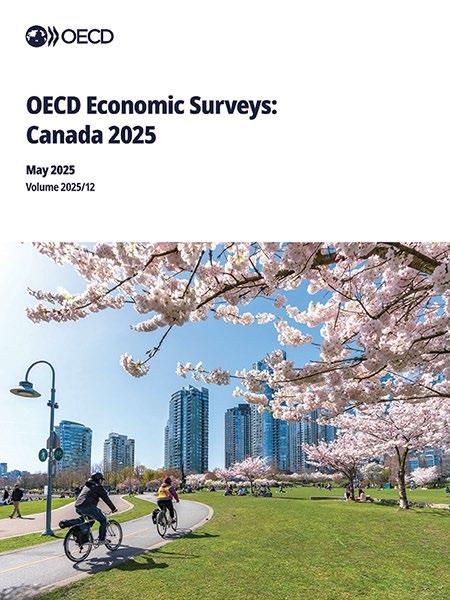












Note: Data are seasonally adjusted. Euro area in this chart covers 17 OECD countries that are also members of the euro area.
Source: OECD Economic Outlook database.

Note: Data are seasonally adjusted. Euro area in this chart covers 17 OECD countries that are also members of the euro area.
Source: OECD Economic Outlook database.


Weighted
Note: Data until 2022 are reported, 2023 and 2024 are assumed to be constant at 2022 level, and 2025 is an OECD calculation based on tariff announcements (cut-off date 16 May 2025).
Source: World Integrated Trade Solution.

Source: OECD Economic Outlook database.



Note: Net debt represents gross liabilities (gross debt) minus financial assets. Source: OECD Economic

Note: The neutral interest rate is the estimated rate to which the policy rate would converge, when output is at its potential and inflation is at its target.
Source: OECD Economic Outlook database, Bank of Canada for the neutral rate.





House prices relative to disposable income per capita
Constant prices, first quarter 2007 = 100
Note: The consumer price index is used as deflator for house prices and the private consumption deflator for disposable income.
Source: OECD Economic Outlook database; OECD Household Indicators dashboard; and OECD calculations.

of population in the bottom quintile of the income distribution spending more than 40% of disposable income on mortgage and rent 2022 or latest year





Source: OECD Productivity Statistics database. Growth


Note: Indicator value from 0 to 6, which increases in the stringency of the regulatory environment.
Source: OECD Product Market Regulation database.

Share of employed adults whose highest qualification is above or below the qualification level required for their job
Note: * Flemish Region only for Belgium; and England only for the United Kingdom. A worker is classified as over-qualified (/under-qualified) when the level of their highest qualification is above (/below) the qualification level required for their job.
OECD (2024),




Note: The chart shows the amounts of economic losses insured based on the midpoint of two estimates: the total losses that were insured, and the average of the insured losses across each individual event. Presenting the midpoint of the two estimates mitigates bias in the data from events with large total losses and low reported insured losses.







Disclaimers:
The statistical data for Israel are supplied by and under the responsibility of the relevant Israeli authorities. The use of such data by the OECD is without prejudice to the status of the Golan Heights, East Jerusalem and Israeli settlements in the West Bank under the terms of international law. This document and any map included herein are without prejudice to the status of or sovereignty over any territory, to the delimitation of international frontiers and boundaries and to the name of any territory, city or area.